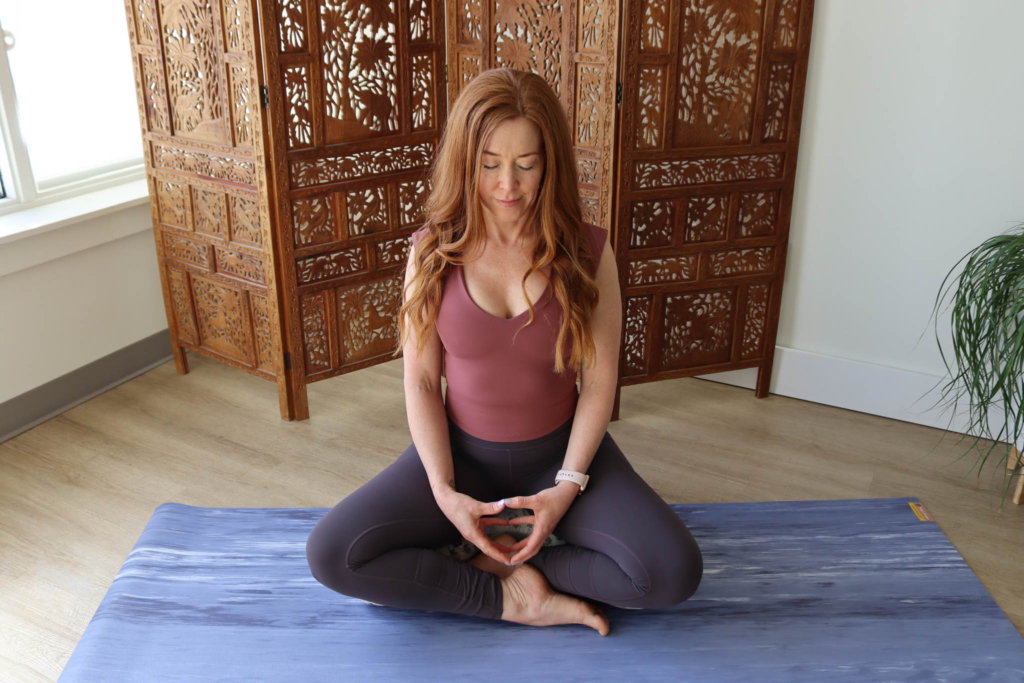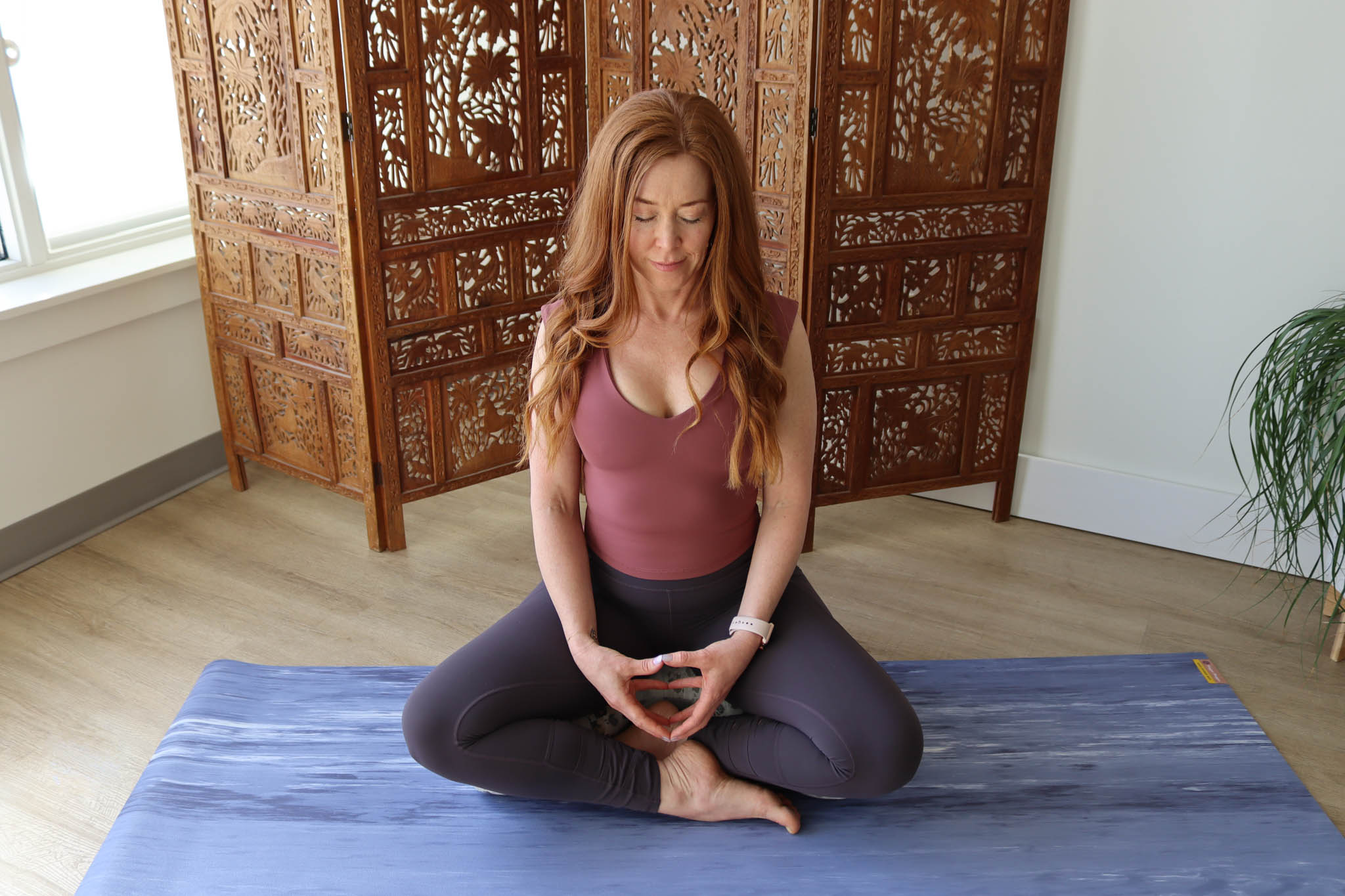This entry was posted on Apr 11, 2024 by Charlotte Bell.

For the primary time since final fall, I’m sitting subsequent to an open window as I write. The spring air, with its occasional hints of blooming bulbs and bushes, is so refreshing. Whereas pranayama (yogic respiration follow) is acceptable throughout all seasons, the clear spring air appears to ask taking a pleasant deep breath. There are various pranayama practices that incorporate mudras—hand gestures meant to facilitate the motion of prana (the animating power in our our bodies and minds). Specifically, I get pleasure from training a easy pranayama mudra referred to as Hasta Mudra.
I don’t declare to be an professional readily available mudras. However I do acknowledge the ability of the few that I’ve practiced recurrently. I’ve been amazed on the distinction delicate adjustments in hand place could make. Hasta Mudra, specifically, has been a favourite amongst my yoga college students. It reveals how seemingly minor adjustments in contact can result in adjustments in respiration that just about anybody can simply really feel. The hand place is sort of easy. Solely the diploma to which your fingers contact shifts. Hasta Mudra lets you focus in on completely different components of the physique’s “respiration areas.” I realized this respiration mudra from Jenny Otto of Physique Stability Yoga Remedy.
First Issues First: Wholesome Respiration
Generally, I’ve averted writing about pranayama follow just because it’s finest to be taught instantly from an skilled trainer. Particularly within the case of the extra sophisticated or intense practices, it’s attainable to overstimulate the nervous system. This will set off bodily, psychological and emotional imbalances. So cautious, knowledgeable instruction is important.
The respiration practices I really feel snug sharing veer towards wholesome pure respiration. This implies sluggish, deep, relaxed stomach respiration. You breathe deeply, however by no means to the purpose of pressure. As you inhale, the stomach ought to develop; as you exhale, it ought to contract. Nothing fancy right here, simply relaxed, nourishing respiration. Keep relaxed, deep respiration as you progress via the assorted phases of Hasta Mudra.
The way to Observe Hasta Mudra
- Sit in a cushty place on a Meditation Cushion or a folded Yoga Blanket. If sitting on the ground is just not snug for you, be at liberty to sit down on a chair as a substitute. What’s essential is that your torso is upright and your pure spinal curves are aligned.
- Settle into your hips and legs and tune into your respiration. As you inhale, permit your stomach to develop. As you exhale, permit it to contract. Breathe deeply, however in a relaxed means, so there’s no pressure.
- Place your fingertips and thumb ideas collectively. Stability the contact between your fingertips in order that it’s each agency and receptive.
- Now, persevering with with deep, relaxed respiration, press the little fingertips and ring fingertips collectively a bit of extra firmly than the others. The place do you are feeling the “middle” of your breath taking place? In different phrases, in the event you think about your respiration area to be your total torso, the place does the breath really feel most distinguished? Take about 5 to 10 breaths.
- Now calm down the contact between your ring and pinky fingertips and press your center fingertips collectively extra firmly than the opposite fingers. Tune into your torso, and see the place the middle of your breath is now. Has it modified? If it’s not clear, return to urgent your ring and pinky fingertips collectively extra firmly and see if the middle of your breath shifts. Then take 5 to 10 breaths along with your center fingers pressed a bit extra firmly than the others.
- Let go of urgent your center fingertips extra firmly than the others. Now press your thumb ideas and index fingertips extra firmly. The place is the middle of your breath now? Once more, be at liberty to change again to the center fingers or the ring and pinky fingers for a breath or two for distinction. Then return to urgent the thumbs and index fingers a bit extra firmly. Take 5 to 10 breaths on this place.
- Now press the fingertips collectively evenly. Take 5 to 10 deep breaths, noticing how your breath feels now.
Exploring Hasta Mudra
These variations of Hasta Mudra help you entry completely different areas of your respiration area. Most individuals really feel the middle of the breath within the decrease stomach within the first (ring and pinky finger) variation, the center within the second (center finger) variation, and the chest within the third (thumb and index finger) variation. The fourth variation, with the fingers urgent collectively evenly, opens up the complete respiration area. Nevertheless, it’s attainable you might expertise this train otherwise. If that’s the case, belief your individual expertise. Your personal expertise is your most dependable information.
Should you get pleasure from Hasta Mudra, play with subdividing your respiration area even additional. Attempt urgent the little fingers, ring fingers, center fingers, index fingers and thumbs collectively individually. Discover if that offers you entry to smaller respiration area areas.
About Charlotte Bell
Charlotte Bell found yoga in 1982 and started educating in 1986. Charlotte is the creator of Aware Yoga, Aware Life: A Information for On a regular basis Observe and Yoga for Meditators, each revealed by Rodmell Press. Her third ebook is titled Hip-Wholesome Asana: The Yoga Practitioner’s Information to Defending the Hips and Avoiding SI Joint Ache (Shambhala Publications). She writes a month-to-month column for CATALYST Journal and serves as editor for Yoga U On-line. Charlotte is a founding board member for GreenTREE Yoga, a non-profit that brings yoga to underserved populations. A lifelong musician, Charlotte performs oboe and English horn within the Salt Lake Symphony and people sextet Pink Rock Rondo, whose DVD received two Emmy awards in 2010.


